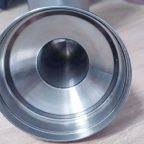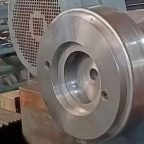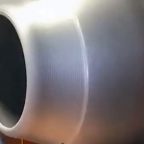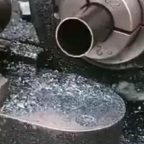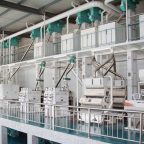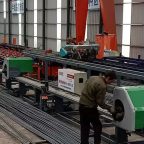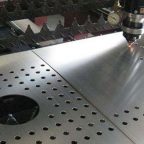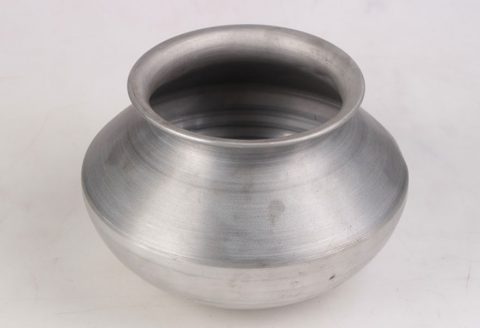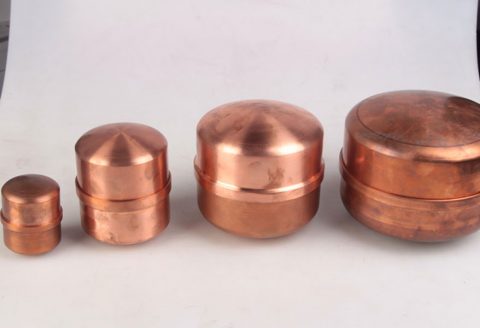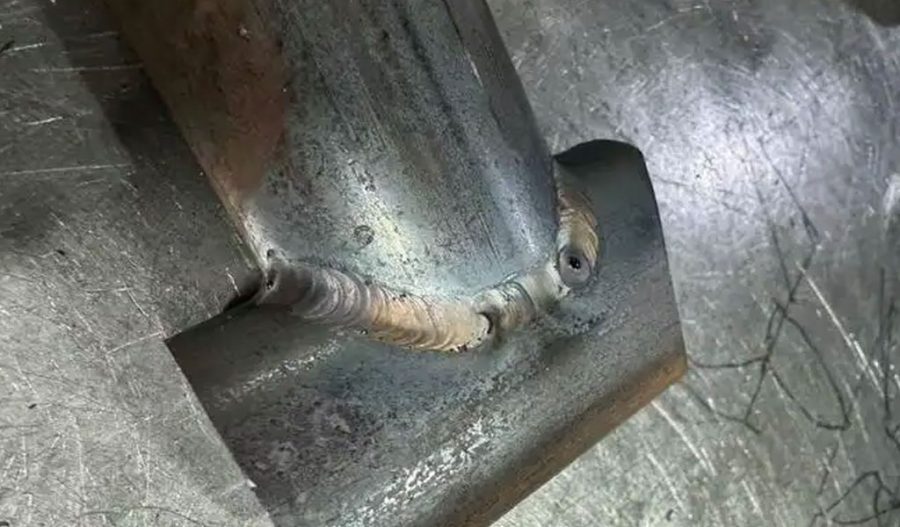
Constant sunlight exposure poses significant challenges to materials, surfaces, and living organisms due to the intense ultraviolet (UV) radiation, thermal energy, and photochemical reactions it induces. Understanding which materials and organisms can withstand prolonged exposure to sunlight is critical for applications in architecture, agriculture, aerospace, and environmental science. This article explores the resilience of various materials (e.g., metals, polymers, coatings, and textiles) and biological entities (e.g., plants, microorganisms, and human skin) under constant sunlight exposure. It examines the mechanisms of degradation, protective strategies, and comparative performance through empirical data and theoretical frameworks.
Introduction
Sunlight, a primary source of energy for Earth’s ecosystems, consists of electromagnetic radiation spanning ultraviolet (UV, 100–400 nm), visible (400–700 nm), and infrared (IR, >700 nm) wavelengths. While essential for photosynthesis and human health, prolonged exposure to sunlight, particularly UV radiation, can cause material degradation, biological damage, and environmental stress. UV radiation triggers photochemical reactions, breaking molecular bonds in polymers, fading pigments, and altering metal surfaces. Thermal energy from IR radiation accelerates these processes by increasing molecular vibrations, while visible light contributes to photodegradation in certain materials.
The ability to withstand constant sunlight exposure depends on intrinsic material properties (e.g., chemical stability, reflectivity, and thermal conductivity), external protective measures (e.g., coatings, stabilizers), and environmental factors (e.g., humidity, temperature, and atmospheric composition). For biological systems, resilience involves adaptations such as pigmentation, DNA repair mechanisms, and physical barriers. This article systematically evaluates the performance of various materials and organisms under continuous sunlight exposure, drawing on laboratory studies, field tests, and theoretical models.
Physical and Chemical Effects of Sunlight Exposure
Ultraviolet Radiation
UV radiation is the primary driver of photodegradation in materials and biological systems. UV-C (100–280 nm) is largely absorbed by the Earth’s atmosphere, but UV-B (280–315 nm) and UV-A (315–400 nm) reach the surface, causing significant damage. In polymers, UV radiation excites electrons, leading to chain scission or cross-linking, which reduces mechanical strength and elasticity. For example, polyethylene degrades via Norrish reactions, forming carbonyl groups that weaken the polymer matrix. Metals, while more resistant, undergo surface oxidation or corrosion when exposed to UV in humid environments.
In biological systems, UV-B damages DNA by forming cyclobutane pyrimidine dimers (CPDs), disrupting cellular function. Plants counteract this through photolyase enzymes, while human skin relies on melanin and DNA repair pathways. Microorganisms, such as extremophiles, exhibit enhanced UV resistance through spore formation or pigment production.
Thermal Effects
Infrared radiation raises surface temperatures, accelerating chemical reactions and physical stress. For materials, thermal cycling (day-night temperature fluctuations) induces expansion and contraction, leading to microcracks. Polymers like polyvinyl chloride (PVC) soften at high temperatures, while metals like aluminum retain structural integrity but may corrode faster. Biological systems face heat stress, with plants employing transpiration and heat-shock proteins to mitigate damage.
Photochemical Reactions
Photochemical reactions involve the absorption of photons, leading to molecular transformations. In dyes and pigments, this causes fading due to chromophore breakdown. In wood, lignin degradation results in yellowing and surface erosion. Protective additives, such as UV absorbers (e.g., benzophenones) and antioxidants, mitigate these effects by neutralizing free radicals or absorbing harmful wavelengths.
Materials Under Constant Sunlight Exposure
Metals
Metals are widely used in construction, transportation, and infrastructure due to their durability. However, constant sunlight exposure can degrade their surfaces through oxidation, corrosion, and thermal stress.
Aluminum
Aluminum forms a natural oxide layer (Al₂O₃) that protects against further corrosion. Its high reflectivity (up to 90% for polished surfaces) minimizes heat absorption. Field tests in desert environments (e.g., Arizona, USA) show aluminum retaining structural integrity after 20 years of exposure, with minimal pitting in humid conditions.
Stainless Steel
Stainless steel, an alloy of iron, chromium, and nickel, resists corrosion due to its chromium oxide layer. Grades like 316 (marine-grade) perform exceptionally well in sunlight, with studies showing less than 0.1% mass loss after 10 years in tropical climates.
Copper
Copper develops a patina (Cu₂O and CuSO₄) that protects against further degradation. While aesthetically pleasing, this patina reduces reflectivity, increasing heat absorption. Copper is less suitable for applications requiring consistent appearance.
Table 1: Metal Performance Under Constant Sunlight Exposure
| Material | Reflectivity (%) | Corrosion Rate (mm/year) | Lifespan (Years) | Cost ($/kg) |
|---|---|---|---|---|
| Aluminum | 85–90 | 0.01–0.05 | 20–50 | 2.5 |
| Stainless Steel | 60–70 | <0.01 | 30–70 | 4.0 |
| Copper | 50–60 | 0.02–0.1 | 50–100 | 7.0 |
Polymers
Polymers are versatile but prone to photodegradation. Their performance depends on molecular structure, additives, and environmental conditions.
Polyethylene (PE)
Polyethylene, a common plastic, degrades rapidly under UV exposure due to chain scission. High-density polyethylene (HDPE) fares better than low-density polyethylene (LDPE), with stabilizers like carbon black extending lifespan to 10–15 years.
Polyvinyl Chloride (PVC)
PVC resists UV better than PE due to its chlorine content, but plasticizers can migrate, causing brittleness. UV-stabilized PVC, used in window frames, lasts 20–30 years in temperate climates.
Polytetrafluoroethylene (PTFE)
PTFE (Teflon) is highly UV-resistant due to its strong carbon-fluorine bonds. It shows negligible degradation after 30 years of exposure, making it ideal for aerospace and industrial applications.
Table 2: Polymer Performance Under Constant Sunlight Exposure
| Polymer | UV Resistance | Lifespan (Years) | Tensile Strength Loss (%) | Cost ($/kg) |
|---|---|---|---|---|
| PE (HDPE) | Low | 5–15 | 30–50 | 1.5 |
| PVC | Moderate | 15–30 | 20–40 | 2.0 |
| PTFE | High | 30–50 | <10 | 20.0 |
Coatings and Paints
Coatings protect surfaces by absorbing or reflecting UV radiation and reducing thermal stress.
Acrylic Paints
Acrylic paints, containing UV-resistant pigments (e.g., titanium dioxide), retain color for 10–20 years. They are cost-effective but prone to chalking in extreme climates.
Fluoropolymer Coatings
Fluoropolymer coatings (e.g., PVDF) offer superior UV resistance, with minimal fading after 30 years. They are expensive but widely used in architectural applications.
Ceramic Coatings
Ceramic coatings, composed of inorganic compounds, resist UV and thermal degradation. They are ideal for high-temperature environments but costly.
Table 3: Coating Performance Under Constant Sunlight Exposure
| Coating Type | UV Resistance | Lifespan (Years) | Color Retention (%) | Cost ($/m²) |
|---|---|---|---|---|
| Acrylic Paint | Moderate | 10–20 | 70–85 | 5.0 |
| Fluoropolymer | High | 20–40 | 90–95 | 15.0 |
| Ceramic | Very High | 30–50 | 95–98 | 25.0 |
Textiles
Textiles used in outdoor applications (e.g., awnings, tents) must resist UV-induced fiber breakdown.
Polyester
Polyester degrades under UV, losing 50% of its tensile strength within 2–3 years. UV stabilizers and coatings extend its lifespan to 5–10 years.
Acrylic Fibers
Acrylic fibers, used in outdoor fabrics, resist UV better than polyester, retaining 80% strength after 5 years. Solution-dyed acrylics perform best.
PTFE Fabrics
PTFE fabrics (e.g., Gore-Tex) are highly UV-resistant, showing minimal degradation after 20 years. They are expensive but durable.
Table 4: Textile Performance Under Constant Sunlight Exposure
| Textile Type | UV Resistance | Lifespan (Years) | Tensile Strength Loss (%) | Cost ($/m²) |
|---|---|---|---|---|
| Polyester | Low | 2–10 | 40–60 | 10.0 |
| Acrylic | Moderate | 5–15 | 20–30 | 15.0 |
| PTFE | High | 15–30 | <10 | 50.0 |
Biological Systems Under Constant Sunlight Exposure
Plants
Plants have evolved mechanisms to tolerate sunlight exposure, balancing photosynthesis with UV protection.
C3 Plants
C3 plants (e.g., wheat, rice) are sensitive to high UV and heat, showing reduced photosynthesis rates after prolonged exposure. They rely on antioxidants (e.g., flavonoids) for protection.
C4 Plants
C4 plants (e.g., maize, sorghum) are more resilient, with efficient photosynthesis under high light and temperature. They produce UV-absorbing pigments like anthocyanins.
Succulents
Succulents (e.g., cacti, agave) thrive in intense sunlight due to thick cuticles, reflective surfaces, and CAM photosynthesis, which minimizes water loss.
Table 5: Plant Performance Under Constant Sunlight Exposure
| Plant Type | UV Tolerance | Heat Tolerance | Photosynthesis Efficiency (%) | Lifespan (Years) |
|---|---|---|---|---|
| C3 Plants | Low | Moderate | 60–80 | 1–5 |
| C4 Plants | Moderate | High | 80–95 | 1–10 |
| Succulents | High | Very High | 90–100 | 10–50 |
Microorganisms
Microorganisms exhibit diverse responses to sunlight exposure, with extremophiles showing remarkable resilience.
Cyanobacteria
Cyanobacteria, photosynthetic microbes, produce UV-protective pigments (e.g., scytonemin) and repair DNA damage via photolyases. They thrive in high-UV environments like deserts.
Deinococcus radiodurans
Deinococcus radiodurans, a radiation-resistant bacterium, repairs UV-induced DNA damage through robust enzymatic pathways. It survives decades of sunlight exposure.
Table 6: Microorganism Performance Under Constant Sunlight Exposure
| Microorganism | UV Tolerance | DNA Repair Efficiency (%) | Lifespan (Years) |
|---|---|---|---|
| Cyanobacteria | High | 80–90 | 1–10 |
| Deinococcus radiodurans | Very High | 95–99 | 10–50 |
Human Skin
Human skin varies in UV resistance based on melanin content, determined by genetic factors.
Fitzpatrick Skin Types
- Type I–II (Light Skin): Highly susceptible to UV damage, with low melanin. Burns easily, leading to DNA damage and skin cancer risk after 5–10 years of chronic exposure.
- Type III–IV (Medium Skin): Moderate UV resistance, with tanning ability. Shows photoaging after 20–30 years.
- Type V–VI (Dark Skin): High UV resistance due to high melanin. Minimal burning, but long-term exposure causes hyperpigmentation.
Sunscreens (SPF 30–50) and UV-protective clothing extend skin resilience by blocking 97–99% of UV radiation.
Table 7: Human Skin Performance Under Constant Sunlight Exposure
| Skin Type | UV Resistance | Burn Risk | Photoaging Onset (Years) | Cancer Risk (Relative) |
|---|---|---|---|---|
| Type I–II | Low | High | 5–10 | High |
| Type III–IV | Moderate | Moderate | 20–30 | Moderate |
| Type V–VI | High | Low | 30–50 | Low |
Protective Strategies
Material Additives
- UV Absorbers: Benzotriazoles and benzophenones absorb UV, reducing photodegradation in polymers and coatings.
- Antioxidants: Hindered amine light stabilizers (HALS) neutralize free radicals, extending material lifespan.
- Pigments: Titanium dioxide and carbon black reflect UV, enhancing durability.
Surface Treatments
- Anodizing (Metals): Increases oxide layer thickness, improving corrosion resistance.
- Laminates (Polymers): UV-resistant films protect underlying materials.
- Polishing: Enhances reflectivity, reducing heat absorption.
Biological Adaptations
- Plant Pigments: Flavonoids and anthocyanins absorb UV, protecting photosynthetic tissues.
- Microbial Spores: Dormant states resist UV and heat.
- Human Sunscreens: Chemical (e.g., avobenzone) and physical (e.g., zinc oxide) sunscreens block UV.
Comparative Analysis
Material Selection Criteria
Selecting materials for constant sunlight exposure involves balancing cost, durability, and performance. PTFE and stainless steel excel in harsh environments but are expensive. HDPE and acrylic paints are cost-effective for shorter-term applications.
Environmental Considerations
High-UV regions (e.g., tropics, deserts) accelerate degradation, necessitating robust materials like fluoropolymers or succulents. Temperate climates allow more flexibility, with PVC and C3 plants remaining viable.
Long-Term Performance
Materials like PTFE and ceramics, and organisms like succulents and Deinococcus radiodurans, demonstrate exceptional longevity, making them ideal for extreme conditions.
Case Studies
Architectural Applications
The Burj Khalifa (Dubai, UAE) uses aluminum and stainless steel cladding, with fluoropolymer coatings, to withstand intense sunlight. After 15 years, the facade shows minimal degradation.
Agricultural Systems
In arid regions, succulent-based xeriscaping reduces water use while maintaining greenery. C4 crops like maize outperform C3 crops in high-UV environments.
Space Exploration
PTFE coatings on satellites resist solar radiation, maintaining functionality for decades. Deinococcus radiodurans is studied for potential bioremediation in space.
Future Directions
Advancements in nanotechnology (e.g., UV-reflective nanoparticles) and genetic engineering (e.g., UV-resistant crops) promise enhanced sunlight resilience. Machine learning models predict material degradation, optimizing design for specific climates.
Conclusion
Constant sunlight exposure challenges materials and organisms through UV radiation, thermal stress, and photochemical reactions. Metals like stainless steel, polymers like PTFE, and coatings like fluoropolymers exhibit superior durability, while succulents, cyanobacteria, and melanin-rich skin excel biologically. Protective strategies, from UV absorbers to DNA repair, extend resilience. By understanding degradation mechanisms and leveraging empirical data, we can select optimal materials and organisms for diverse applications, ensuring longevity in sunlit environments.
Maximize Tooling and CNC Metal Spinning Capabilities.
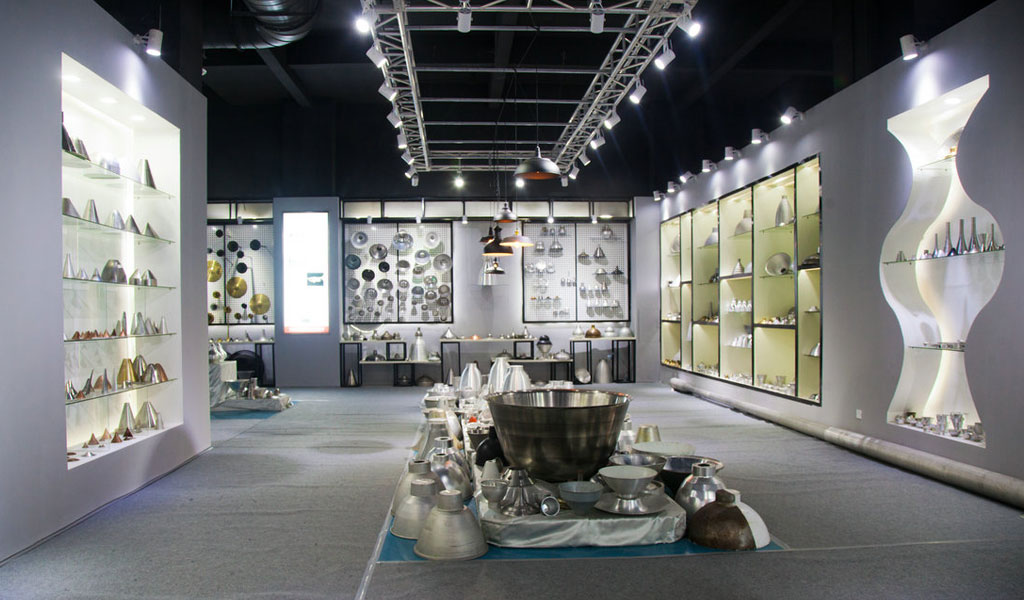
At BE-CU China Metal Spinning company, we make the most of our equipment while monitoring signs of excess wear and stress. In addition, we look into newer, modern equipment and invest in those that can support or increase our manufacturing capabilities. Our team is very mindful of our machines and tools, so we also routinely maintain them to ensure they don’t negatively impact your part’s quality and productivity.
Talk to us today about making a rapid prototype with our CNC metal spinning service. Get a direct quote by chatting with us here or request a free project review.
BE-CU China CNC Metal Spinning service include : CNC Metal Spinning,Metal Spinning Die,Laser Cutting, Tank Heads Spinning,Metal Hemispheres Spinning,Metal Cones Spinning,Metal Dish-Shaped Spinning,Metal Trumpet Spinning,Metal Venturi Spinning,Aluminum Spinning Products,Stainless Steel Spinning Products,Copper Spinning Products,Brass Spinning Products,Steel Spinning Product,Metal Spinnin LED Reflector,Metal Spinning Pressure Vessel,
